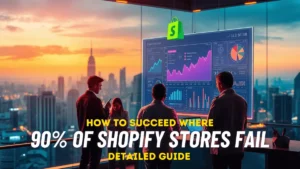Ecommerce platforms festival sales concluded with record-breaking numbers, generating nearly Rs 1 lakh crore in transactions. Consumers have thronged top sites like Amazon and Flipkart for premium brands and high-end products. The sale of this season witnessed a growth of more than 23% over the previous year and reconfirmed the continued rise of online shopping during festive events.
Key factors experienced in demand from non-metro consumers which have evinced increased interest among luxury and premium brands. New and old customers alike increased their interest leading ecommerce companies to complete festival sales with impressive results. With festival sales now over, it has emerged that demand on ecommerce platforms festival sales has been quite strong.
Non-Metro Demand Fuels Growth in Festival Sales
Tier-II and tier-III cities saw a huge jump in purchases this year. States Amazon, 85% of its customers fall in this category. Much the same was the story in festival sales for Flipkart and other ecommerce companies. This increased demand from the non-metropolis reflected across appliances and smartphones as well as the fashion categories.

Large appliances have grown 30% from previous year’s performances. Premium brands in all categories-watches, fragrance, K-beauty, and jewelry-also create more demand. Non-metro regions have largely contributed to the numbers, revealing the growth of their purchasing power as well as interest in high-end products.
Smartphones Lead Sales on Ecommerce Platforms
Of course, the largest beneficiary of the ecommerce platforms festival sales would be Smartphones. More than 65 percent of all these sales were concluded online for the smartphones; premium and mid-premium models saw tremendous growth. Flipkart and Amazon separately reported premium Android smartphones, especially those in the realm of AI-led features, saw huge interest.
For Amazon, the year-on-year growth was the highest in the smartphones segment priced above Rs 30,000. And these sales are coming largely from smaller cities at 70% of sales. The premium demand of smartphones at Flipkart also rose 17% year-on-year. Mobile phones were the biggest selling category during the festival sales on ecommerce platforms.
Fashion and Luxury Brands Experience Record Demand
Ecommerce portals saw an increase in sales of fashion and luxury items during festive season shopping, with categories like jewelry, handbags, and kids-wear reading a 400% plus increase. Luxury appliances witnessed 30% more sales in contrast to last year, Amazon reported. The leading beauty and fashion retailer, Nykaa, witnessed consistent growth in orders, particularly of wedding-related fashion.
SoftBank-backed Meesho, which ran its Mega Blockbuster Sale, saw over 40% rise in orders. Home and kitchen, which were at 105%, beauty and personal care at 60%, and baby essentials at 75% reported the most growth. Fashion and luxury brands took festival sales on the ecommerce platforms to unprecedented levels.
Quick Commerce Emerges as a Key Driver
Given its reputation for same-day and next-day deliveries, quick commerce was a big beneficiary of festival sales on the ecommerce platforms. Datum Intelligence said quick commerce commanded $1.1-1.2 billion in gross merchandise value. This trend showed a strong upward curve in the last week of the festive period with last-minute purchases really spiking across the platforms.
The strategic unplanned purchases helped boost sales in the cities where quick commerce had only recently expanded. Many brands found the strategy to be effective, contributing to the 23% growth of festive season sales over the previous year. The ease and speed of quick commerce were a great convenience for ecommerce platforms during festival sales.

UPI Transactions Hit Record Highs During Sales
This increase in ecommerce sales is also reflected in the Unified Payments Interface. National Payments Corporation of India reported an aggregate of 16.58 billion UPI transactions in October with a 45% year-on-year growth. The aggregate value of transactions has risen to Rs 23.5 lakh crore at a 34% year-over-year growth during the festive season.
This exponential growth of digital payments made ways easy for consumers to shop across ecommerce festival sale platforms. Easy and safe UPI payment natures further led the transaction boom, which was one strong indication of the efficacy of digital payment methods at huge sales events.
D2C Brands and Ecommerce Platforms Benefit from Festive Sales
D2C brands enjoyed stellar growth during this festival season on ecommerce platforms. Categories such as beauty, footwear, and apparel witnessed more than a 700% on-year growth. Wakefit said it witnessed a 50% increase in revenue this season and its website saw a five-fold rise in traffic.
For example, Pilgrim had 40-50% growth on marketplaces and 50% growth on its own channels. Hair growth serums and face care items were some of the most demanded new products that were developed. The D2C brands received a wider reach during ecommerce platforms’ festival sales as they consolidated in the market.
Brands Prepare for More Opportunities Post-Festival Season
Their success in festivals and sales on platforms has seemingly made brands feel assured to push more such opportunities. With the festivities starting early this time of the year, companies feel this has created strong demand for the wedding season which witnesses huge consumer expenditure during these times. This may well continue keeping the momentum much beyond Diwali into the New Year.
Brands are today concerned with what they can do to retain the engagement and help further growth. Indeed, as seen in ecommerce festival sales, appetite is high among consumers, especially for premium and luxury goods. Such consistent demand opens up a great opportunity for brands to tap new customers and go on to deepen long-term relationships.
Conclusion
The ecommerce platforms festival sales have surely proved that online shopping in India is a significant option, with sales nearing Rs 1 lakh crore. Also, people are made pretty comfortable buying high-value items online. Not only do they have growth lines in non-metro but also have a demand for premium brands.
With the increasing needs of diversified consumers, sales at the ecommerce platforms during festivals will most likely trend upwards. This sales trend will, in turn, vindicate the fact that ecommerce platforms have become go-to places for festive shopping since such sales have been getting so successful. At a time when digital payments are only getting more pronounced and capabilities of quick commerce are improving, it has only reaffirmed the need to keep these sites must-go shopping destinations for millions all across the country.
















